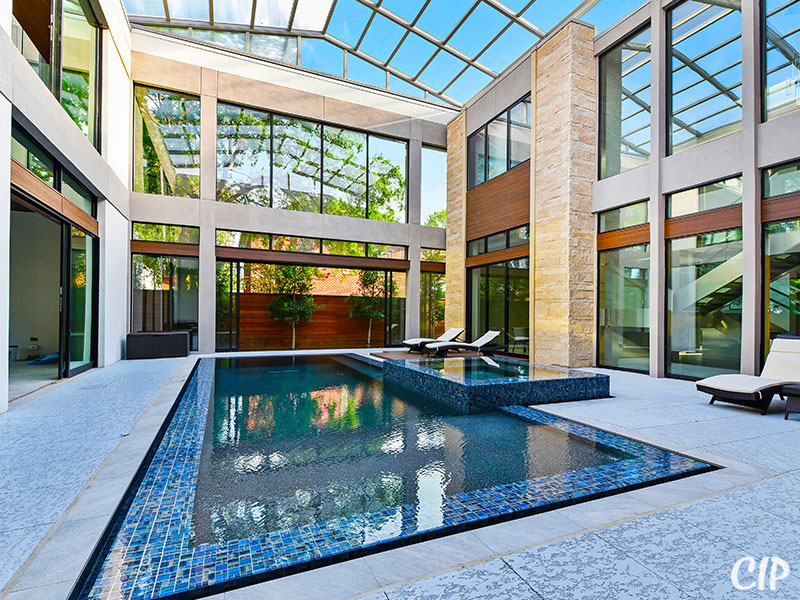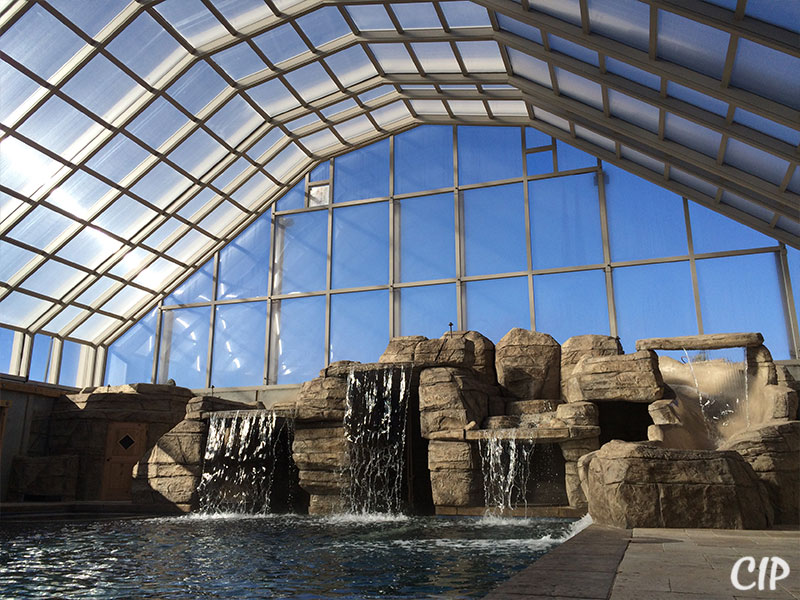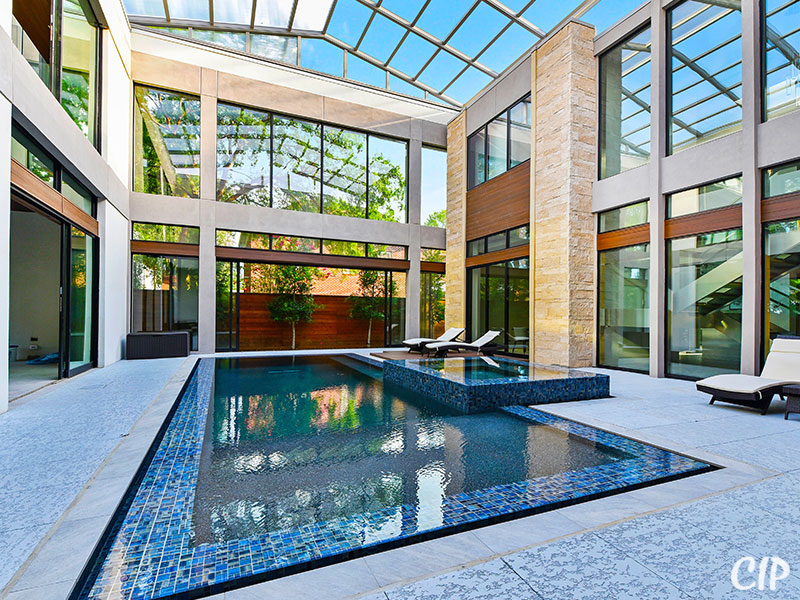The fusion of indoor and outdoor pool spaces presents a transformative shift in aquatic architecture. The technical intricacies of merging these environments go beyond aesthetics, demanding meticulous planning and execution. Here’s an in-depth exploration of the technical facets underlying the integration of an indoor-outdoor pool.
Revolutionizing Pool Environments: A Technical Deep Dive into Indoor-Outdoor Pool Integration

1. Structural Engineering
Assessing structural requirements to seamlessly merge indoor and outdoor spaces demands precision. Engineers evaluate load-bearing capacities, foundation designs, and material suitability to ensure structural integrity.
2. Climate Control Systems
Implementing sophisticated HVAC systems regulates temperature and humidity transitions between indoor and outdoor spaces. Precision is key to maintaining comfortable conditions year-round.
3. Water Filtration and Treatment
Sophisticated filtration and treatment systems cater to both indoor and outdoor water zones. Integration of systems like UV sanitation and ozone purification ensures optimal water quality.
4. Seamless Transition Mechanisms

Precision-engineered sliding doors, retractable roofs, or movable partitions enable fluid transitions between indoor and outdoor areas, enhancing usability and aesthetic continuity.
5. Electrical and Plumbing Integration
Expert coordination of electrical and plumbing networks is imperative. Concealed conduits and strategic placements ensure functionality without compromising the visual appeal.
6. Acoustics and Sound Engineering
Designing for optimal acoustics involves strategic placement of sound systems and acoustically treated surfaces to deliver a pleasant auditory experience throughout the combined space.
7. Lighting Systems and Automation
Smart lighting solutions with automation synchronize indoor-outdoor lighting for ambiance, security, and energy efficiency, enhancing the visual appeal and safety of the pool area.
8. Waterproofing and Drainage Solutions
Comprehensive waterproofing techniques and efficient drainage systems prevent water intrusion, safeguarding the indoor environment while managing runoff in the outdoor space.
9. Safety Measures and Compliance
Implementing safety features like pool covers, non-slip surfaces, and compliance with local safety regulations ensure a secure and hazard-free environment for users.
10. Technology Integration and Control Systems
Incorporation of smart technology and centralized control systems streamlines pool management, offering remote access to regulate temperature, lighting, and security.
11. Sustainable Practices
Integrating eco-friendly solutions such as solar heating, rainwater harvesting, or energy-efficient systems aligns with sustainability goals, reducing the pool’s environmental impact.
12. Expert Consultation and Execution
Collaboration between architects, engineers, designers, and specialized contractors is vital for flawless execution, ensuring that the technical aspects harmoniously complement the overall design vision.
13. Ventilation Systems
Incorporating efficient ventilation systems ensures proper air circulation, minimizing condensation, and preventing mold or mildew growth in indoor spaces while maintaining fresh air quality.
14. Material Selection and Compatibility

Careful selection of materials such as flooring, wall finishes, and poolside materials is crucial. Ensuring compatibility with varying indoor-outdoor conditions is essential for durability and aesthetics.
15. Fire Safety and Emergency Planning
Implementing fire safety measures and emergency protocols is paramount. Installing fire extinguishers, smoke detectors, and clear emergency exits ensures user safety in both indoor and outdoor areas.
16. Pool Cover Integration
Seamlessly integrating pool cover systems, whether automated or manual, requires precise planning to ensure they complement the design while providing efficient coverage and safety.
17. Insulation and Energy Efficiency
Proper insulation techniques and energy-efficient solutions, such as double-glazed windows or thermal insulation, contribute to maintaining consistent temperatures and reducing energy consumption.
18. Control of Environmental Elements
Systems controlling natural elements, like rain sensors for automated roof closures or wind sensors for outdoor shade systems, help manage the environment based on prevailing conditions.
19. Maintenance Access and Serviceability
Design considerations for access points to vital systems and equipment facilitate easier maintenance and servicing, ensuring optimal functionality and longevity of the integrated pool space.
20. Customization and User Preferences
Tailoring technical solutions to meet specific user preferences, such as customized lighting scenes, programmable water features, or personalized automation settings, enhances user experience.
21. Future Adaptability and Upgradability
Designing with future advancements in mind allows for the integration of new technologies or features, ensuring the pool space remains adaptable and can evolve with changing needs.
22. Soundproofing and Privacy Measures
Incorporating soundproofing materials and privacy solutions in both indoor and outdoor areas ensures a tranquil environment and enhances the privacy of users.
23. Integration of Accessibility Features
Designing for accessibility includes features like handrails, ramps, or zero-entry areas, ensuring the pool space is easily accessible and usable for individuals with diverse abilities.
24. Water Feature Synchronization
Synchronizing water features like fountains, jets, or waterfalls between indoor and outdoor spaces requires precision in plumbing and pump systems to ensure consistent water flow and aesthetics.
25. Green Technology Integration
Incorporating green technology such as eco-friendly pool cleaning systems, energy-efficient LED lighting, or solar-powered heating options aligns with sustainability goals and reduces environmental impact.
26. Pest Control Measures
Implementing pest control measures, such as screens or barriers, helps prevent insects or critters from disrupting the pool area’s comfort and cleanliness.
27. Anti-Slip Surfaces and Safety Standards
Ensuring the use of anti-slip surfaces in wet areas and complying with safety standards for railings and barriers contribute to a secure environment, reducing the risk of accidents.
28. Weatherproofing and Sealing
Employing weatherproofing techniques for doors, windows, and other openings prevents water or air leaks, ensuring the indoor space remains dry and comfortable.
29. Remote Monitoring and Control Systems
Installing remote monitoring systems allows homeowners to track and control various aspects of the pool environment remotely, providing convenience and peace of mind.
30. Pool Water Level and Overflow Management
Designing overflow systems and managing water levels in the pool to prevent flooding in indoor areas requires meticulous planning and effective drainage solutions.
31. Consideration of Building Codes and Regulations
Adhering to building codes and regulations specific to indoor-outdoor pool integration is crucial to ensure legal compliance and avoid potential issues during construction or operation.
32. User-Friendly Interfaces and Controls
Implementing intuitive control interfaces for lighting, temperature, and other pool functions enhances user experience, making it easier to operate and manage the integrated space.
Conclusion
Revolutionizing pool environments through indoor-outdoor integration involves a comprehensive understanding and meticulous execution of various technical elements. From structural considerations to climate control, water treatment, seamless transitions, and sustainability initiatives, each aspect contributes to a harmonious and functional integration. This technical deep dive underscores the complexities involved in creating transformative aquatic spaces, where innovation and precision redefine the pool experience.

